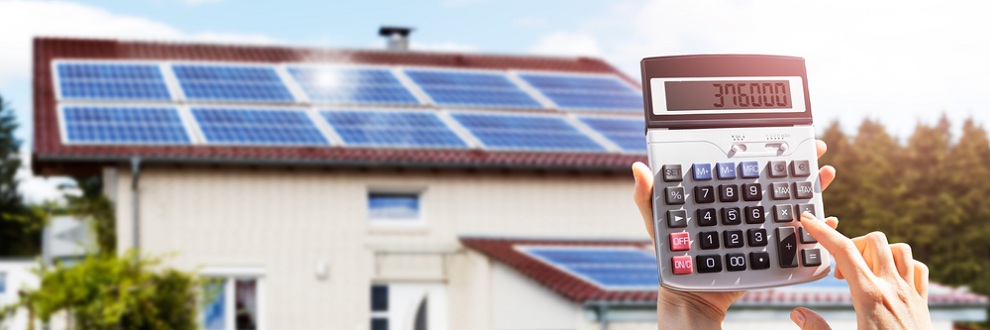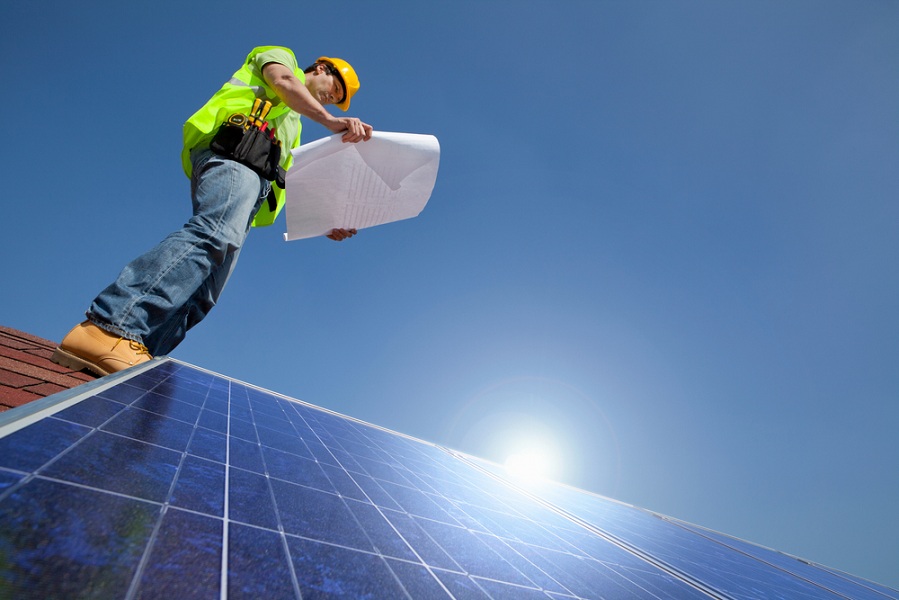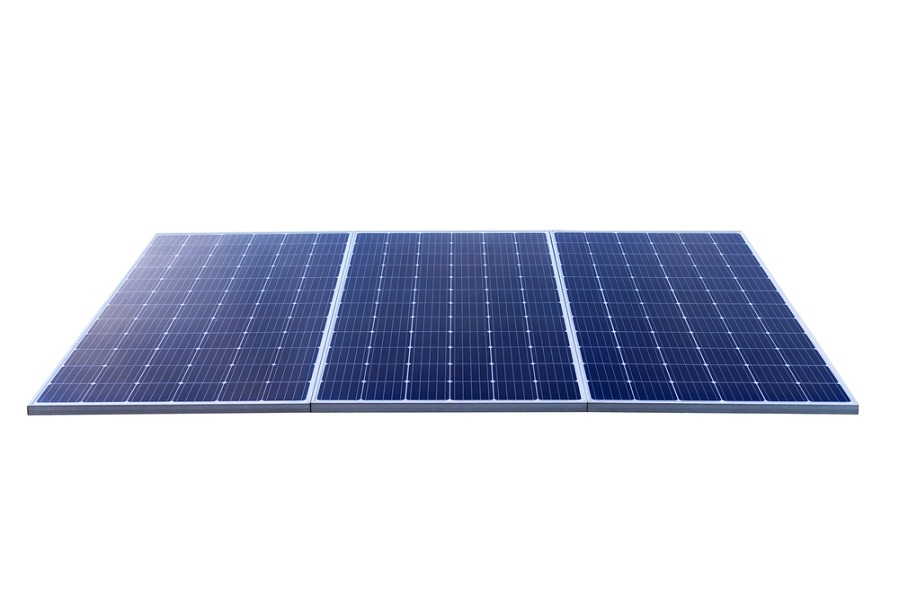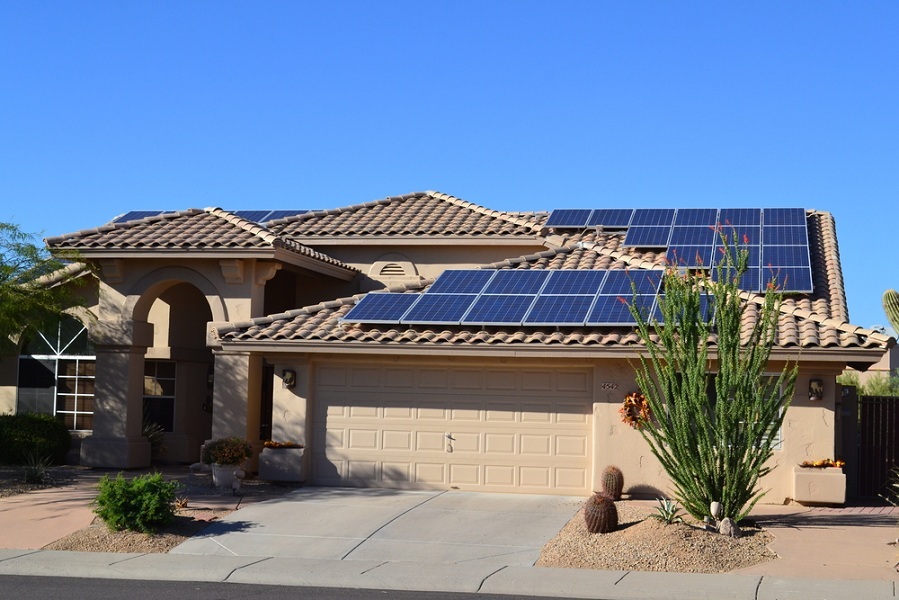Solar power has become increasingly popular in Arizona, known for its sunny weather.
This blog explores solar worth in Arizona, looking into the cost of an installation, the amount of sunlight available during the day, and estimated payback times for a solar system.
If you live in Arizona, solar power is usually worth considering. Utility companies offer rebates for purchasing solar panels. With the addition of the Arizona sales and income taxes exemptions, the removal of property taxes for solar panels, and the federal solar incentive, solar power has become financially viable in Arizona, with a return on investment of 11.5 years!
Common queries
How much are Arizona solar energy panels worth?
Solar energy is spreading around the world. It makes perfect sense, saves our resources, and saves the homeowners' budget!
Before delving into the details of solar power in Arizona, let's take a quick overview of the basics.
Note: If you don't need to learn about solar panels, you can click the Page Menu button and select the relevant section.
Major Elements of a Solar Power System
Grid-tied systems require local permits for installation, which is by far one of the most common kinds of solar systems homeowners need.
A grid-tied solar panel system connects directly to the utility grid and requires installation by a professional solar contractor.
Tools Required for Grid-tied Solar Panel System

The YT video shows a solar power installation crew working. It provides an overview of the whole project, which makes it a useful tool for understanding the equipment required to install a solar panel on a rooftop.
These solar panels were installed with micro-inverter technology. They don't work the same way as a central or a stringer inverter. They convert the voltage (DC) into an alternating current (AC).
Solar panels generate DC electricity which needs to be converted into AC electricity using inverters before households can use it.
Microinverters are attached to each panel backplate and are far more efficient than central or string inverters. Most residential solar systems still rely on string inverter technology, which converts DC power from the panels into AC power for household distribution.
For how many years can solar panels work?
Most solar panel manufacturers offer warranties ranging from 20-30 years. Fifty years of reasonably good performance is not unusual.
As the solar panels age, output wattage decreases gradually, but the decrease is gradual, at only 0.4% to 0.6% per annum.
The specifications given by the manufacturers usually specify 90% of the expected performance after ten years of operation and 80% after operating for 20 years.
If there is any problem with the equipment, it is covered by warranty, so if something goes wrong, it will be fixed free of cost.
Solar inverters usually last for at least 12 to 15 years, but they may not be able to provide power for as long as a solar panel would. Solar microinverters and power converters can last just as long as their counterparts, so they have a longer period of coverage under warranties.
Micro inverters are a good solution if there is temporary shading and help maximize energy production.
Working of a Solar Panel System Tied to the Grid
The black arrows show the DC flow before converting it into AC. The red arrows show where AC voltage travels in the circuit. The green arrows show how electricity flows in the usual way when the circuit is turned on.2
Note: Net metering tool tracks the flow of electricity into and out of the power company’s system. During peak hours, the electricity generated by solar panels is fed back into the power system.
Most household devices run off electricity generated by solar cells before taking energy from the electrical grid. But they automatically switch to using the grid if there isn't enough sunlight for panels to generate electricity.
Arizona Federal Solar Tax Incentives

The government created the federal solar tax incentive to help homeowners claim back some of the costs associated with installing a solar energy panel.
You enter the amount in next year's tax return, and the amount you owe in taxes is automatically calculated for you. If, for example, your Federal Solar Energy Credit is $2,000 and your state income taxes come to $5,000, then your total taxable income is only $3,000.
Working Instance:
The solar tax credit in 2021 was 26%. If the solar panel cost was $17,000, then your tax rebate was calculated like this:
17000 x 26% = $4420 - your credit to balance state taxes.
Solar rebates were initially set at 30 percent in 2019, decreased to 25 percent in 2020 through 2021, and then decreased again to 22 percent for solar panels installed in 2022.
The credit will expire if the government doesn't vote to renew the federal income tax credit by 2023. President Biden has often expressed his strong long-time commitment to all renewable-powered initiatives.
Information Credits: Federal Solar Tax Credits
Solar Tax Rebate Programs in Arizona

Arizona has the most sunshine per year, so it makes sense for investors to put their money into solar energy there. States offer some incentives to encourage homeowners to install solar panels.
Tax Credit for Home Solar Systems in Arizona
With this credit, you get back 25% of the cost of installing solar energy for your house. It’s worth investing for at least $1000. It is usually taken on income tax for the next year.
Exemption of Tax on Equipment Purchase
This program allows homeowners to avoid paying sales taxes when they buy a solar energy system, saving an additional 5.6% off their total investment costs.
Exemption of Tax on Property
Solar panels add value to homes; the house's entire value is usually assessed for tax purposes. This program exempts a solar energy system from state property taxes for homeowners who install them in Arizona.
Rates of Solar Energy Buy-Back in Arizona
Electricity utilities operate energy buybacks, and regulatory authorities determine these rates. As part of its energy policy, the state has switched from Net Metering to an export rate model.
Net metering allows for tracking electricity coming into and going out of the grid, which results in credits that can be used later.
The Export Rate system balances the power generated by the solar panels against the power consumed by the electricity company and pays homeowners according to their output. This amount is then taken out from the homeowner's final electricity bill.
Here are examples of buybacks from two utility companies (from Oct 1, 2021):
You can set the actual rate depending on how much electricity usage there is at peak times when electricity usage is high, and prices are high.
If a homeowner has used more electricity during the peak demand period, then the rate for each kWh will be higher than normal.
You may want to consider consuming less electricity during peak hours or having a larger solar panel that can provide enough energy for your home without drawing from the power grid.
Arizona Solar System Payback Period
Solar energy can save money in sunny regions, and Arizona is no exception to that rule. On average, a solar system pays for itself after about 11 years.
Determining the Payback Time
It’s pretty simple – divide the solar system cost (after deducting any state and federal incentives) by the annual energy savings.
Data from historical databases, such as Global Solar Atlas, show the irradiance level at any given time and place. This information is required for calculating the solar energy system’s output.
Irradiance, or solar radiation, is expressed in kW·h/m²/d or year. It’s also called peak sunlight hours.
Is it Worth Investing in Arizona Solar Systems?

Finding the payback time for a 5-kilowatt System
This calculation takes into account federal tax credits but excludes state taxes.
Home values vary from one region to another. Is solar power worth investing in for houses in Arizona? According to the numbers, it appears that it does, but other factors may be at play.
If a house's worth doesn't increase after installing solar panels, then there's no reason for the government to offer a property tax exemption for them.
Most reputable sources claim that installing solar power increases the worth of an Arizona house by 2 percent to 3 percent.
Elements Affecting the Output of Solar Power Systems
Is solar power worth considering in all U.S.-based regions? Solar energy generation capacity depends on several factors. Some of which we can influence and others we cannot.
Tilt angle and shading affect the visibility of the sun, so they both influence solar output.
Other factors outside our control include weather conditions, like clouds, fog, and rain.
Here's a list of the main things that can reduce solar panel efficiency:
Optimum Direction for Maximum Solar Output
If you want to go solar, the best way to point your solar panel arrays in the Northern Hemisphere is southward. However, it doesn't hurt to be prepared for any eventualities.
You can also point solar panels toward the Southwest, Southeast, East, or West. Pointing solar panels north is not a good idea because direct sunlight gives the maximum solar power.
Roofing systems with normal tilt angles can produce considerable amounts of electricity when pointed northwards due to the presence of diffuse light. It's not the best position for maximum power output.
Perfect Angle of Tilt Arizona Solar Energy Systems

A 45-degree tilt angle is quite a good one, providing enough power output throughout the year for the standard fixed panel rooftop mount.
Some solar panels include an option for adjusting their angle, so they face the sun at different times throughout the year.
During summers, this setting would be latitude -15 degrees; during winters, it will be latitude + 15 degrees.
It will be helpful to optimize solar output throughout the year.
For Phoenix, AZ, the ideal tilt angles for the seasons are 18.45 degrees during the summer and 48.45 degrees during winter.
The following table compares the yearly power output of a solar system in Phoenix, AZ, when tilted at an optimum angle of 57 degrees versus panels mounted on a flat surface.
Installing solar trackers can increase the efficiency of solar energy production by up to 40%.
The downside is that these tracking devices are expensive and are not very affordable for smaller residential solar installations.
Adding more solar panels may be cheaper if the house needs more power than installing a tracking system.
To determine how much energy a solar panel generates, you must first know its peak sunlight hour value. To determine the size of your solar power system, you must first know the irradiation and your average annual energy usage.
Measurement of Arizona Residential Energy Consumption
Assessing each appliance to determine overall usage is a monotonous task.
It's relatively easy for many appliances. The assessment needs to be done differently for refrigerators and freezers because they include compressors with electric motors.
When starting up, compressor motors typically generate surge currents, which are always larger than the current required for normal operation. Sometimes the compressor doesn't run, but it uses no electricity.
To determine how much energy your house uses, look at last year's electric bill.
The Number of Solar Power Panels Required for An Arizona Home

Modern solar panels for residential use are usually rated between 225 to 415 Watts.
Remember that when entering panel size into the calculator below, enter kilowatt ratings rather than wattage ratings, i.e., 275 watts will be entered as 0.275 kW.
Previously, I talked about the losses associated with solar electric PV power generation, and the calculator automatically considers the average losses.
Go to Global Solar Atlas and check out your city's irradiance peaks.
Enter this number with the energy your house consumes annually, and the calculator will tell you how many solar panels would be needed to meet all your power needs.
Important note: The solar calculator is an estimate for general purposes. A professional solar installation company can provide very accurate figures.2
Installing the system yourself can save up to 50% of its price. You'd need help with the permits, paperwork, and technical support to connect to the power lines.
Many homeowners have installed their solar panels, but their cost has been steadily decreasing for years. Letting a qualified solar contractor handle the installation is usually much easier than doing it yourself.
Solar Power Generation During a Power Blackout
Grid-tied solar panels automatically disconnect when the electricity goes out. This is to keep electrical workers safe while working on the lines. This is called anti-islanding
This safety measure is called ‘anti-islanding.' Islanding is when a solar power plant runs when the grid is not operating, which is unsafe.
Cost of Arizona Residential Solar Installation
On average, installing a 5 kW solar panel system in Arizona would be approximately $18,050, excluding state tax credits or other incentives.
Related Queries
Is it worth investing in solar right now?
For 2021 through 2023, solar power is worth it because its payback period is just under 12 years. After that, no one knows whether incentives and rebates will remain available.
Government commitments to renewable power generation will likely ensure long-term financial incentives for home solar systems.
Does solar power make sense?
Solar power is worth investing given that communities are committed to renewable energy sources for financial and environmental reasons.
The most important thing is the solar energy payback time, which is the time it would take to recover the initial investment by saving enough energy from the sun to offset the costs of generating electricity using fossil fuels. Arizona has an average payback time of 11 years.


